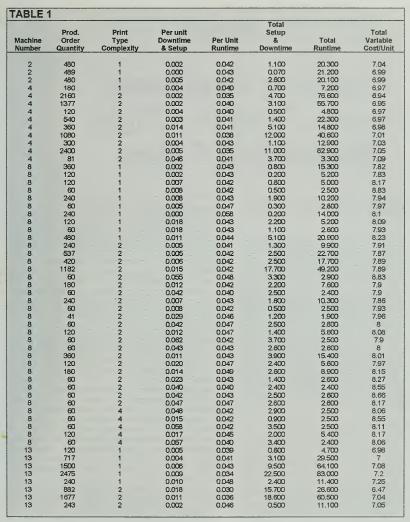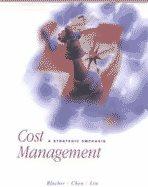Laurent Products is a manufacturer of plastic packaging products with plants located throughout Europe and customers worldwide.
Question:
Laurent Products is a manufacturer of plastic packaging products with plants located throughout Europe and customers worldwide. "There is no doubt that the need to continue to grow sales is an important corporate objective and one which we need to always have in mind," remarked Amoud Baynard, managing director. "Not only is this important in temis of continuing to increase sales revenue overall but it is an essential part of our commitment for next year's budget. Resisting group pressure and allowing ourselves this time to test the market for other new segments has brought some order into this phase of our development. The segment penetration achieved so far and the opportunity to build on this most successful initiative augers well for the future. Thank you, George, for a comprehensive summary of the market result to date" concluded Amoud. "It seems as though this initiative is one which will help us meet out short and longer-temn objectives." Amoud Baynard's summary concerned a strategy overview provided by George St. Marc, marketing director of the company.
MARKETING STRATEGY During the past ten years Laurent Products has successfully developed a line of packaging materials and a unique bagging system which present an important opportunity to increase the productivity of checkout counters in grocery stores. The plastic bags manufactured by Laurent are produced in several sizes, different plastic film colors, and may have attractive multi-color printed designs on one or both sides to meet the specification of a particular grocery store. The company concentrated its efforts in selling to the top twenty grocery market chains in Europe. By limiting its marketing efforts to a relatively few, very large multi-outlet grocery chains (which have centralized purchasing groups), the company achieved low mariceting and selling costs but high market penetration. Last year the company reached a market share of 65% in the large g grocery chain martlet and, in turn, relatively large customer order sizes. Two market V segments are evident in the large grocery chain martlet. In the first (called the value added segment) customers buy the company's product primarily because of its advantage in reducing operating costs at checkout counters. The advantages provided by the Laurent bagging system include the lower cost of bags and labor costs of running the checkout counter as well as improved customer service. Frequently, the store operafions personnel in this segment are active in making the buying decision. The second segment is referred to as being price sensitive as the customers purchase these products primarily on the basis of price. For these customers, purchasing managers are the key decisionmakers in the buying decision.
RECENT COMPETITION Laurent's success in the grocery chain maricet has attracted an increasing number of competitors into the martlet. While the company had been very successful in bringing out a series of new product types with innovative labor-saving features for the grocery stores, the competitors have eventually been able to develop quite similar products. The result has been increased competifion with a substantial reduction in Laurent's prices (dropping 26% last year), and a major decline in the firms' profit margin. The size of the price sensitive segment is growing rapidly while the value added martlet segment is shrinking in size. The company faces an increasingly competitive market situafion characterized by significant excess producer capacity.
WHOLESALE MARKET INITIATIVE As a result of the increased competition in the grocery chain market, George has proposed to begin to focus on the small independent grocery stores who purchase bags from large wholesale distributors. The potential sales for this wholesaler segment is about the same size as the grocery chain market (20 billion bags per year versus 25 billion bags per year), but includes a much larger number of independent store customers. At this time less than 15% of the bags sold in the wholesaler market are made of plastic.
The independent grocery stores differ from the large grocery chains in that they purchase their grocery bags from wholesalers and distributors. Compared to the grocery chains, there are many more independent grocery store outlets widely dispersed over a large geographical area. The pilot marketing studies run last year by Laurent indicate that the customer order sizes for the wholesaler segment tend to be relatively small, and that the number of different product variations (in terms for example of print color, film color, and print type) tend to be relatively large in comparison with the grocery chain market. These studies also indicate that prices (and corresponding profit margins) are much higher than in the price sensitive segment currently served by the company.
MANUFACTURING To support domestic and export sales, the company has located a number of plants throughout Europe to best support the geographical spread of the supermarket and hypermarket outlets of its various customers. "In the eariy years," explained Marcel Ray, manufacturing director, "capacity had, by necessity, always chased demand. The rapid growth in sales during the past few years and the need to make major decisions conceming new plant locations and process investments had understandably contributed to this capacity following the demand situation. However, with sales starting to level off this problem of capacity has now corrected itself."
Investments in manufacturing had been to support two principal objectives; to increase capacity and to reduce costs. The cost reduction initiatives principally concerned material costs and reduced processing times. "Current initiatives" explained Marcel "are continuing these themes. Our capacity uplifts will take the form of equipment similar to our existing machines. Over the years we have deliberately chosen to invest in machines which are similar to existing equipment in order to capitalize on the fact that the process is relatively simple and that products can, with relatively few exceptions, be processed on any machine in the plant. The only major restriction is the number of colors which a machine can accommodate on a single pass. Future investment proposals now being considered are based on this rationale."
In order to make best use of total capacity at all sites, customer orders are collated at the head office site in Lyon. They are then allocated to plants to take account of current plant loading, available capacity, customer lead times, and transport distances between the plant and a customer's required delivery location. As a result, fonward loading on a plant is only two or, at most, three days ahead. Plants then schedule these orders into their production processes in order to meet customer call-offs and individual equipment loading rules.
Once the printing details are agreed with a customer, a plate is produced and checked. In line with a call-off schedule, the plates are allocated to machines. Color changes (where necessary) are also part of the setup details. T-1 provides an actual schedule of orders for four different bagging lines which is representative of the operations in the Paris Plant (and also for the company's other plants).
CONCLUDING REMARKS In reviewing the proposed mari^eting initiatives regarding the wholesaler market, Amoud Baynard, commented, "Since sales in our traditional marl^ets are leveling off, the new marketing initiative appears to be an important step in giving us a fresh impetus to sales volume growth. We have now reached a point in our company where we do not have to endure capacity shortage problems, in fact, with the drop in sales last year, the company currently has excess capacity with which to pursue the wholesaler market. So, our main concern is to improve the decline in the profit perfonnance that has occurred during the past year, and the new marketing initiatives should help to restore the profit margins and hence to secure this necessary, overall improvement.
REQUIRED 1 .
Discuss briefly Laurent's competitive position and strategy.
2. What are the implications of the marketing and manufacturing initiatives undertaken by Laurent?
3. How does Laurent's strategy deal effectively with global competition in its business.
How should it?
4. Using the data in Table 1 and appropriate methods of analysis such as regression, analyze the effect of order size and product variety on the productivity and cost structure of the Paris plant.
Step by Step Answer:

Cost Management A Strategic Emphasis
ISBN: 9780070059160
1st Edition
Authors: Edward Blocher, Kung Chen, Thomas Lin





